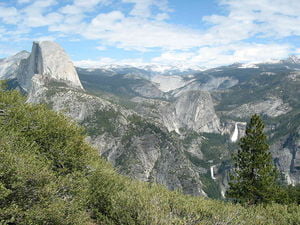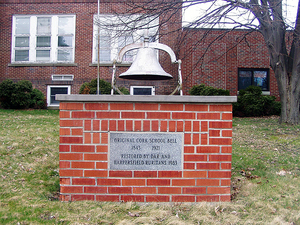Few essays are as masterfully composed as Joan Didion’s powerful narrative “Los Angeles Notebook”—a captivating essay that conveys Didion’s view of the Santa Ana winds. Didion’s sophisticated diction and selection of detail not only express the sense of anxiety and apprehension that overcomes Los Angeles whenever the Santa Ana winds blow, but also Didion’s belief that the winds make people unhappy. The Santa Ana Winds are weird. Without these two stylistic elements, “Los Angeles Notebook” would fail to communicate the edginess Didion feels characterizes the winds and the negative emotions people experience during the Santa Ana as tangibly as she does.
Didion begins by describing what heralds a Santa Ana, writing that “there is something uneasy in the Los Angeles air…some unnatural stillness, some tension.” The words “uneasy,””;unnatural stillness,” and “tension” expertly capture Didion’s view of the Santa Ana winds because their meanings are clear and understandable. Rather than using pretentious language, Didion chooses common words to describe the winds. She continues to color the rest of the composition with the same feelings of worry by selecting words that reflect her trepidation. Didion depicts the Santa Ana winds as ones that “[dry] the hills and the nerves to the flashpoint,” evoking images of raw tight nerves, therefore suggesting nervousness. What makes Didion’s essay so effective in conveying her view of the Santa Ana winds is her diction. She is able to achieve the perfect thought of image though her concise words. And what better tool can the author employ than using just the right word? As a gifted writer, Didion is able to convey her view of the Santa Ana winds—their “eeriness,” their “surreal” quality—through her compelling diction.
Didion’s selection of detail further expresses her view that Santa Ana winds are a natural phenomenon unique for its ability to cause tension. Didion explains that the Santa Ana is a foehn wind, then goes on to list the characteristics of a foehn. While the first couple of lines about foehn winds are nothing more than trivial tidbits that add interest to the essay, Didion supports her view of the Santa Ana winds by later writing that “Whenever and wherever a foehn blows, doctors hear about heartaches and nausea and allergies, about ‘nervousness,’ about ‘depression.'” Choosing this fact not only further conveys her view that the Santa Ana winds are a peculiar happening but it also suggests that there may be a scientific explanation for the feelings of anxiety people get during a Santa Ana. Didion continues to include other facts that help express both her view of the Santa Ana and the view of scientists who agree with her in saying that there is something strange about the wind. This selection of detail makes her opinion seem more like fact than opinion.
Didion employs two very useful stylistic elements to convey her view that the Santa Ana winds are a peculiar occurrence that makes people nervous and unhappy: diction and selection of detail. Both tools lend her essay a sophisticated flair and help her openly express her feelings about the Santa Ana.






